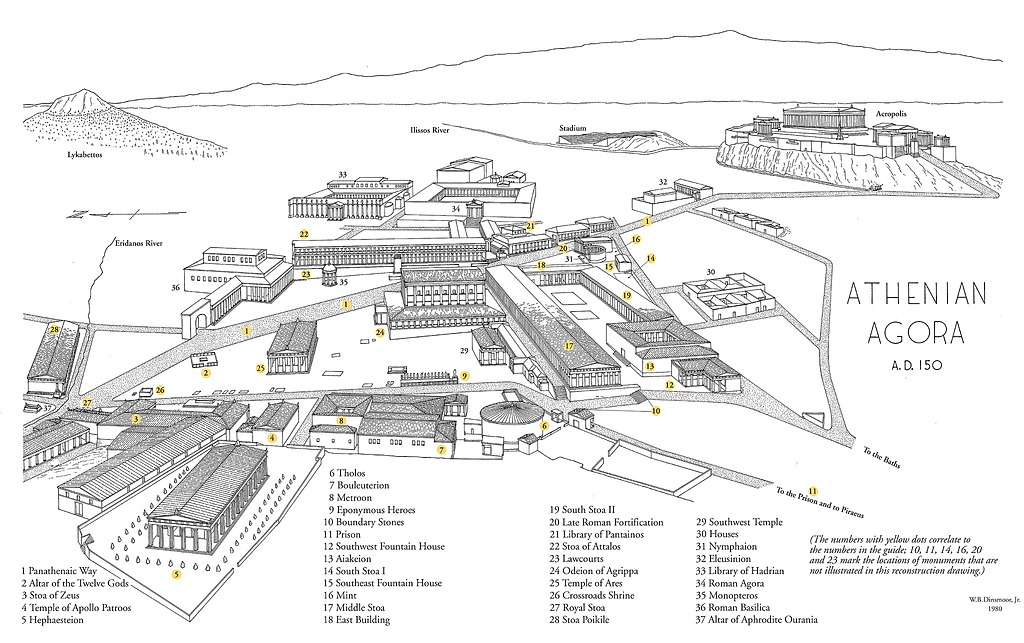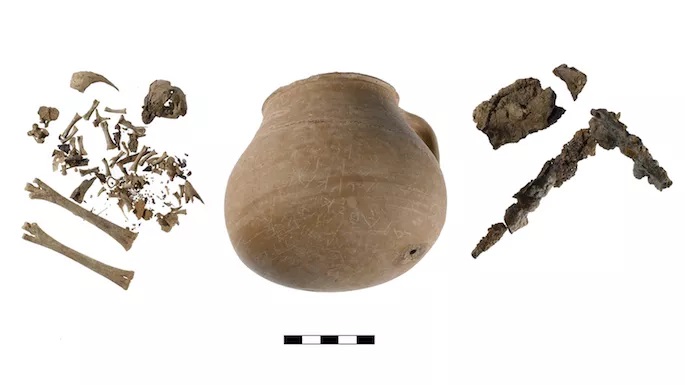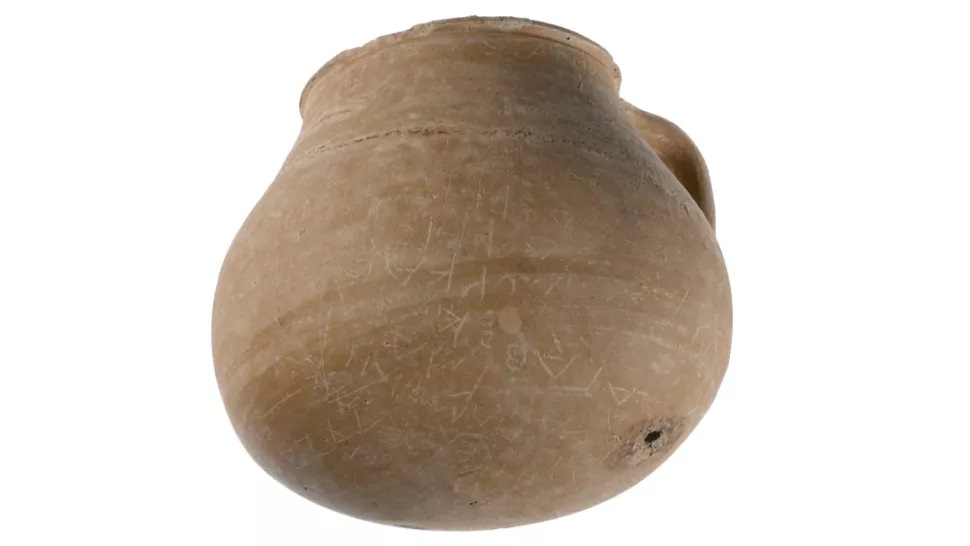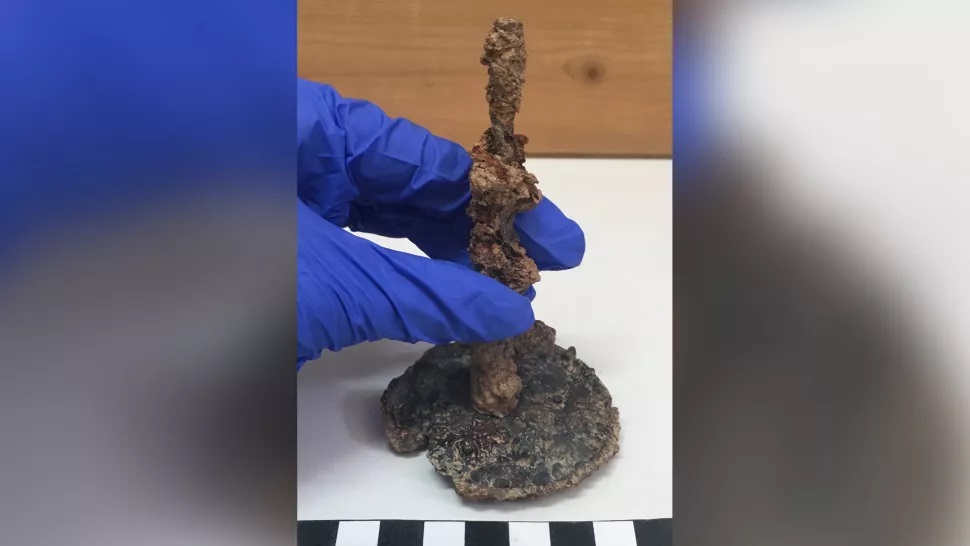TWH – The remains of a mutilated chicken stuffed in a ceramic vessel, called a chytra, offer new insights into magical and mystical practices at the Agora of Athens (Market Hill) in ancient Greece. The Agora was located on the northwest corner of the Acropolis and served as a central place for commerce and assembly. The area has been under continuous excavation by the American School of Classical Studies at Athens since 1931.
Archeologists discovered the ceramic pot on August 3, 2006, as part of an excavation of the Agora. The chytra was discovered in a corner of the Agora beneath the floor of what is believed to be an industrial building likely used by artisans and craftspersons.
The chytra was recently analyzed and it was clearly used for a magical objective. Interestingly, the chytra may have been made specifically for magical purposes because it is different from other commonly used chytra. It was inscribed with the names of at least 30 individuals. The researchers noted that some of the names were previously unattested. It has an inscribed red ochre wreath-like design which was added to the pot prior to firing. The inscription also added what is “possibly a verb of binding.”

The Athenian Agora (Courtesy: Athenian Agora Excavations )
The ceramic vessel contained the head and lower hind legs and feet of a young chicken. The body parts were then sheathed in a skin container and then placed in the ceramic pot. The pot was pierced with an iron nail with a bronze coin, now illegible, that was fused on top of the nail head. The coin was noted as a deliberate addition. The entire magical work was then buried underneath the floor of the classical Commercial Building of the Agora. The ritual appears to have taken place around 300 BCE.
Dr. Jessica Lamont, Assistant Professor of Classics at Yale, was the author of the research published in Hesperia: The Journal of the American School of Classical Studies at Athens. Dr. Lamont noted that “Together with the iron nail, bronze coin, and dismembered chicken, the chytra is striking for its use within a cursing ritual. The vessel itself served as the medium for a binding curse—a sort of ceramic curse tablet—which primarily took the form of personal names in the nominative case, inscribed without patronymics, demotics, or other civic/occupational identifiers.”
The ritual bears all the signs of sympathetic magic to transfer the characteristics of one object to the target of the spell. The practice was common in antiquity and still practiced.
The Greco-Syrian rhetorician of the Sophist School, Libanios (Latin: Libanius; Greek: Λιβάνιος) wrote of a similar practice in 300 CE, some 600 years later after the chytra was buried. Libanios was a Pagan Hellene and remained unconverted during the Christianization of the Mediterranean prior to the faith’s adoption by Rome.
Libanios attests to the occurrence and efficacy of sympathetic magical practices and their free use and presence in the public sphere. Libanios once recounted his lost ability to speak in public as well as accompanying headaches, pain, and gout. Libanios recovered from his affliction when he discovered and eliminated a dismembered and ritually manipulated chameleon in his classroom.
The chameleon’s head had been bent into its hind legs. One of its forelimbs had been removed and the other limb stuffed in its mouth. Libanios describes the magical attack in Orationes (Lib. Orationes 1.245–249). Lamont notes that, “The manipulation of the animal’s limbs—one amputated, another obstructing the tongue—inhibited Libanios’s oratorical capacities, specifically the upraised hand with which orators gestured while speaking and the mouth, shorthand for the faculties of speech. The broken carcass had triggered Libanios’s bodily pains, while the contortion of the head between the legs had caused his headaches. This was a supernatural attack on Libanios’ physical and cognitive faculties, effective through and through.”
This finding in the Agora, however, is unique. While parts of the ritual echo Greco-Roman and Gallo-Roman magical practices and the use of chickens, especially the feet, are common offerings or spell components, this particular magical assemblage with the chytra has no parallel.
Sympathetic magic may have been used to transfer the helplessness of the chicken to the names of the individuals inscribed. The spell may also convey the inability of the individuals to protect themselves. Archeologists have found the remains of similar sympathetic spells across the ancient Roman world from West Asia to Africa and Britain.
Indeed, similar spells are found in modern magical and spiritual practices.
Dr. Lamont speculates that “the insertion of a low-denomination coin in the mouth of the chytra after the chicken’s death, and just prior to burial, ritually simulated the interment of the named individuals—and their transfer to the Underworld.”
The placement of the magical chytra may also be important. Curses between craftsperson have been well-documented in antiquity and in 4th-century Athens. Lamont suggests that “the curse could have been created by craftspersons working in the industrial building itself, perhaps in the lead-up to a trial concerning an inter-workplace conflict.”
Whatever the specific use or aim of the ritual, the find offers new insights into the private magical practices of ancient Athenians, the echoes of which are still present today in modern rituals.
The Wild Hunt is not responsible for links to external content.
To join a conversation on this post:
Visit our The Wild Hunt subreddit! Point your favorite browser to https://www.reddit.com/r/The_Wild_Hunt_News/, then click “JOIN”. Make sure to click the bell, too, to be notified of new articles posted to our subreddit.


